The profound wisdom of ancient Bharat (India) has always held a deep reverence for nature, recognizing the intrinsic bond between humanity and the natural world. Among the many branches of ancient knowledge, Vruksha Ayurvedam stands out as a remarkable yet almost forgotten science dedicated to the wellness and care of plants, trees, and vegetation. Rooted in sacred scriptures and time-tested traditions, Vruksha Ayurvedam offers a holistic understanding of nurturing the natural environment that sustains human life.
In this article, we explore the essence of Vruksha Ayurvedam—its origins, its comprehensive teachings, and its invaluable relevance in today’s world. This content draws inspiration from the insightful exploration presented by Project Shivoham, a channel dedicated to unveiling ancient Indian wisdom.
Table of Contents
- Introduction: The Symbiotic Cycle of Life in the Bhagavad Gita
- The Historical and Cultural Context of Vruksha Ayurvedam in Bharat
- What is Vruksha Ayurvedam?
- Ancient Scriptures Documenting Vruksha Ayurvedam
- The Structure of Vruksha Ayurvedam: Twelve Foundational Chapters
- Timeless Wisdom from Masya Purana: The Value of Trees
- The Relevance of Vruksha Ayurvedam Today
- Frequently Asked Questions (FAQs) about Vruksha Ayurvedam
- Conclusion: Embracing an Ancient Legacy for a Sustainable Future
Introduction: The Symbiotic Cycle of Life in the Bhagavad Gita
The foundation of Vruksha Ayurvedam can be glimpsed in the sacred verses of the Bhagavad Gita, where it is said:
“The food from the plants which is annam is the core life support for humanity and the rain in turn is the core life support for the trees.”
This verse beautifully encapsulates the interdependent cycle between plants, water, and human existence. Sri Krishna emphasizes the importance of maintaining this cycle smoothly to ensure prosperity and happiness for all beings. This ancient wisdom remains profoundly relevant as it highlights the delicate balance that sustains life on Earth.
The Historical and Cultural Context of Vruksha Ayurvedam in Bharat
India’s history is deeply intertwined with pastoral and agrarian lifestyles. For centuries, the people of Bharat have shared a unique and sacred relationship with the natural world. This bond is not only emotional or spiritual but practical and scientific as well.
In the Rigveda’s tenth mandala, we find the manifestation of Devi Aranyani, revered as the mother goddess of trees, plants, animals, birds, and the entire ecosystem. She symbolizes the nurturing and protective force behind all vegetation, highlighting nature’s role as the core life support system for humanity.
But this reverence goes beyond prayer. Ancient texts stress the importance of protecting the trees and plants around us—an ethic that gave rise to the specialized science of Vruksha Ayurvedam.
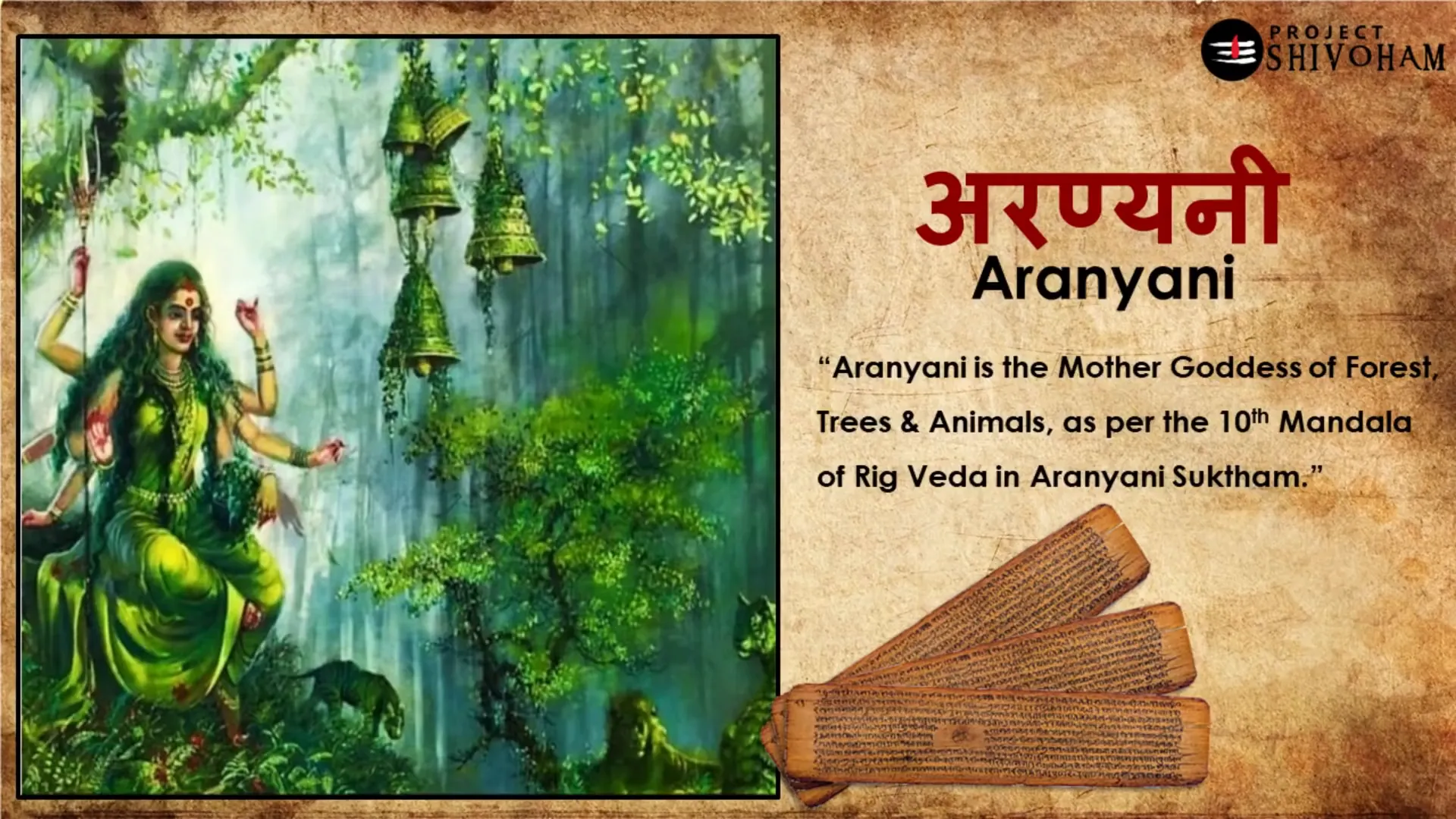
What is Vruksha Ayurvedam?
While Ayurveda is widely known as the ancient Indian system of medicine focused on human health, Vruksha Ayurvedam is its botanical counterpart—an ancient branch of medicine dedicated to the health and wellness of plants, trees, crops, and vegetation.
This science encompasses the entire lifecycle of plants, from seed selection to nurturing, protection, and preservation. It holds detailed knowledge about soil types, irrigation, fertilization, pest control, and even the healing of damaged trees.
Vruksha Ayurvedam is a vast compendium that was once integral to agrarian societies but has largely been forgotten over time. Reviving this knowledge today could greatly enhance environmental stewardship and sustainable agriculture.
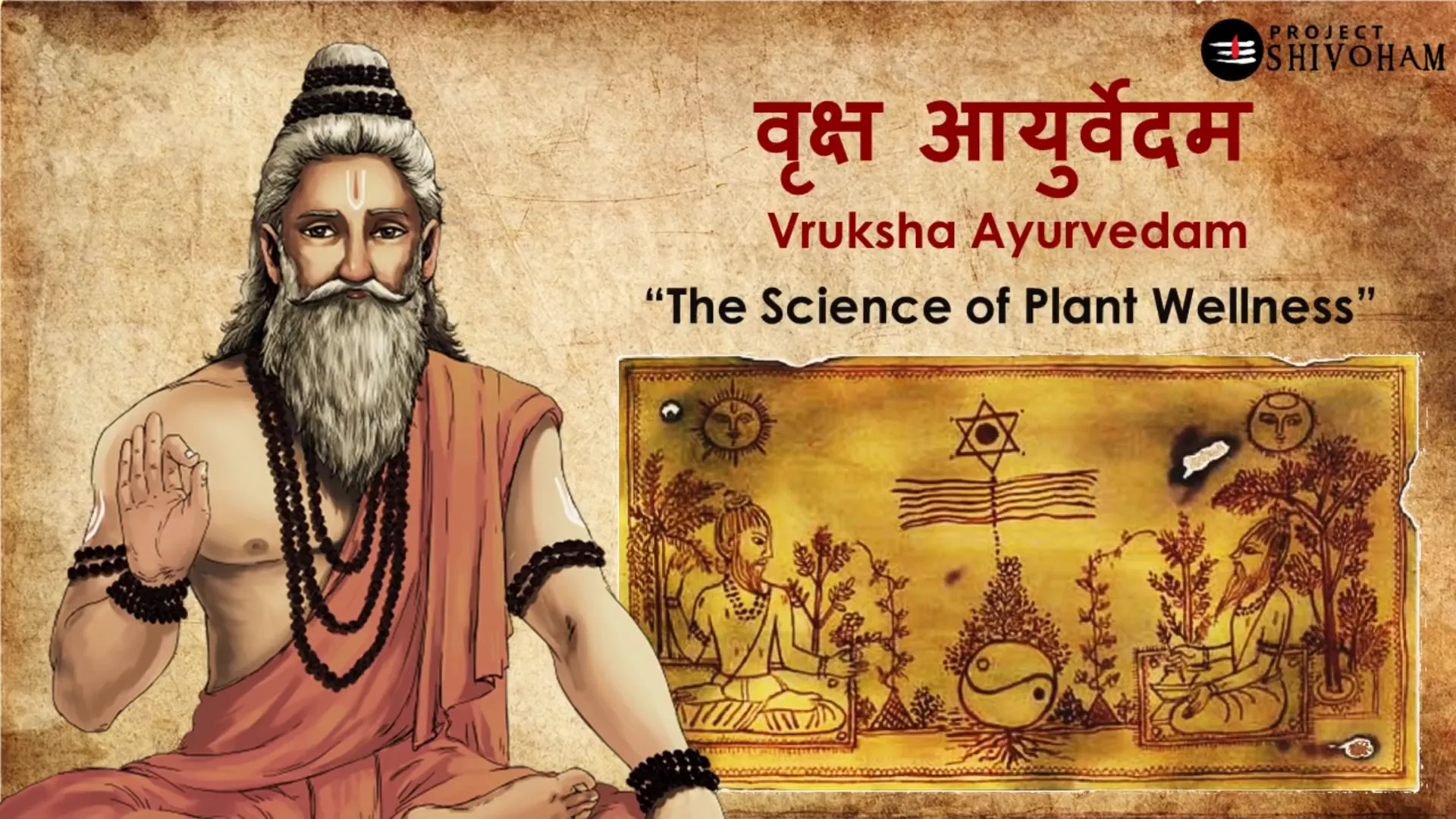
Ancient Scriptures Documenting Vruksha Ayurvedam
The roots of Vruksha Ayurvedam trace back to the Adhravanavedam, but it is first explicitly mentioned in the Agni Puranam. Over centuries, several key texts have expanded this knowledge, including:
- Agni Puranam – The earliest text referencing Vruksha Ayurvedam.
- Ardha Shastra by Janikya (350 BCE) – A detailed treatise on plant care.
- Brihat Samhita by Varahamihira (520 CE) – A comprehensive work covering various aspects of agriculture and plant science.
- Briksha Ayurvedam by Surapala (1000 CE) – A specialized text focusing on plant medicine and wellness.
These scriptures provide a wealth of information on understanding soil properties, water needs, seed selection, planting methods, nurturing crops, pest control, and preservation. In essence, they describe the entire agricultural cycle and the protection of trees.

The Structure of Vruksha Ayurvedam: Twelve Foundational Chapters
Vruksha Ayurvedam is systematically organized into twelve chapters, each focusing on a critical aspect of plant and tree care. Let’s explore these chapters to understand the depth and breadth of this ancient science.
1. Bhoomi Nirupana – Understanding Soil
Everything begins and ends with soil. This chapter explains various soil types and their properties, including how much water each type consumes. It also advises precautions when planting crops in different soils and methods to enhance soil fertility if it lacks nutrients.
Understanding soil is fundamental because the health of plants largely depends on the quality and condition of the soil they grow in.
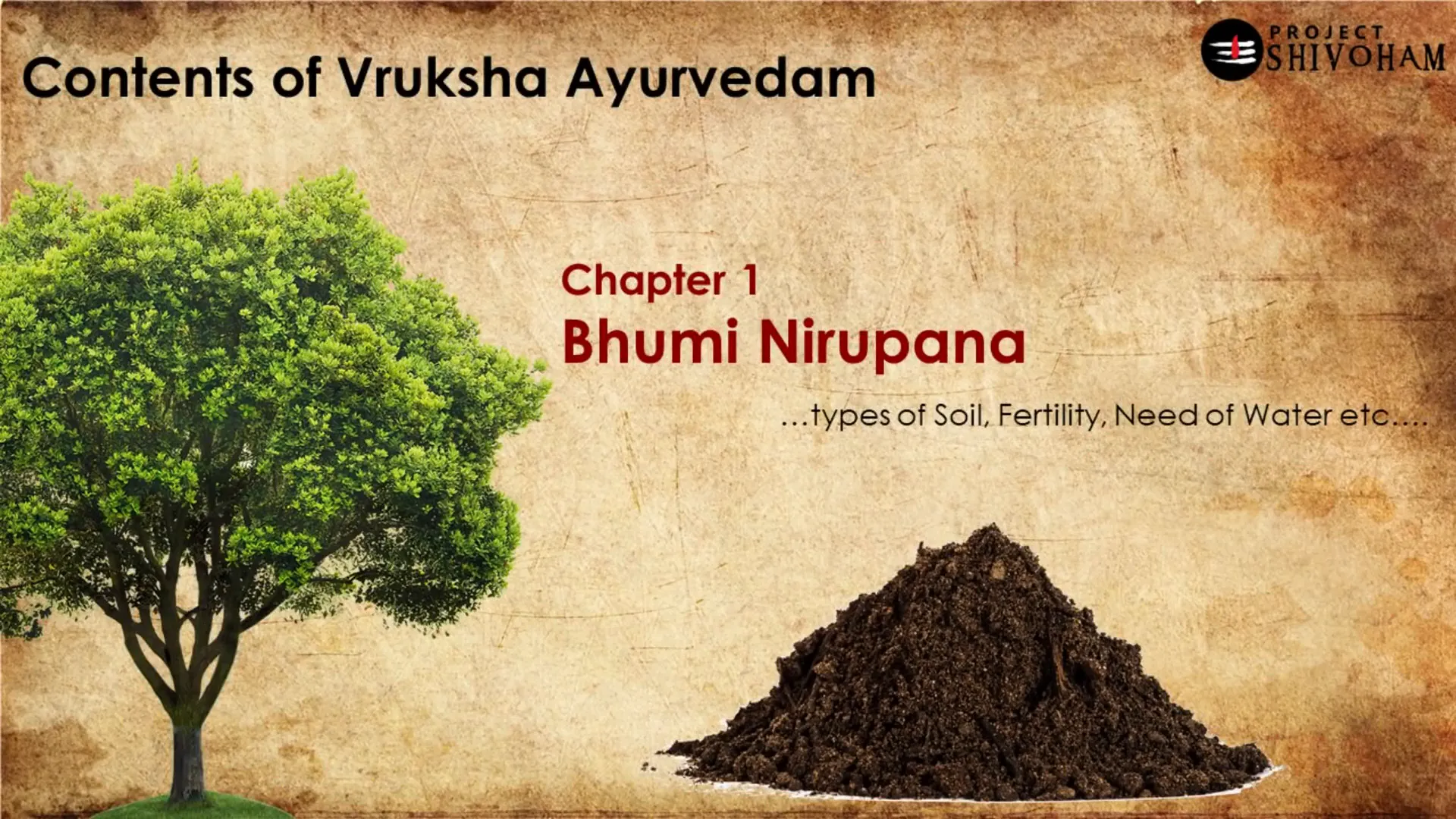
2. Bijot Patthiviti – Seed Selection and Preservation
The second chapter focuses on choosing the right quality seeds and preserving them to maintain their potential. Proper seed selection and storage are crucial for ensuring healthy crops and sustainable agriculture.
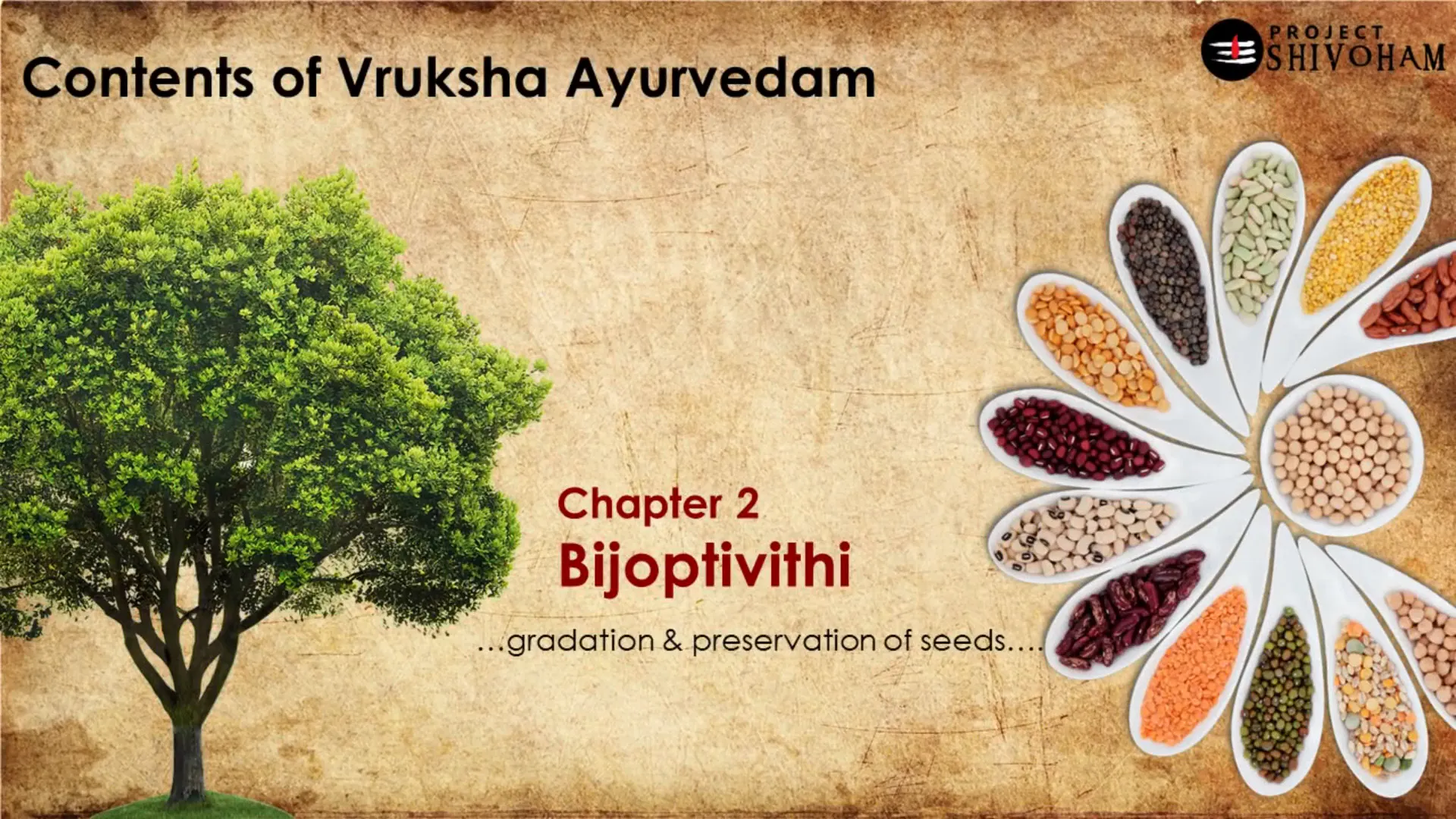
3. Padapa Vivaksha – Plant and Tree Biology
This chapter delves into the biology of plants and trees, explaining their internal anatomy and mechanisms. A thorough understanding of plant biology helps in nurturing them effectively.
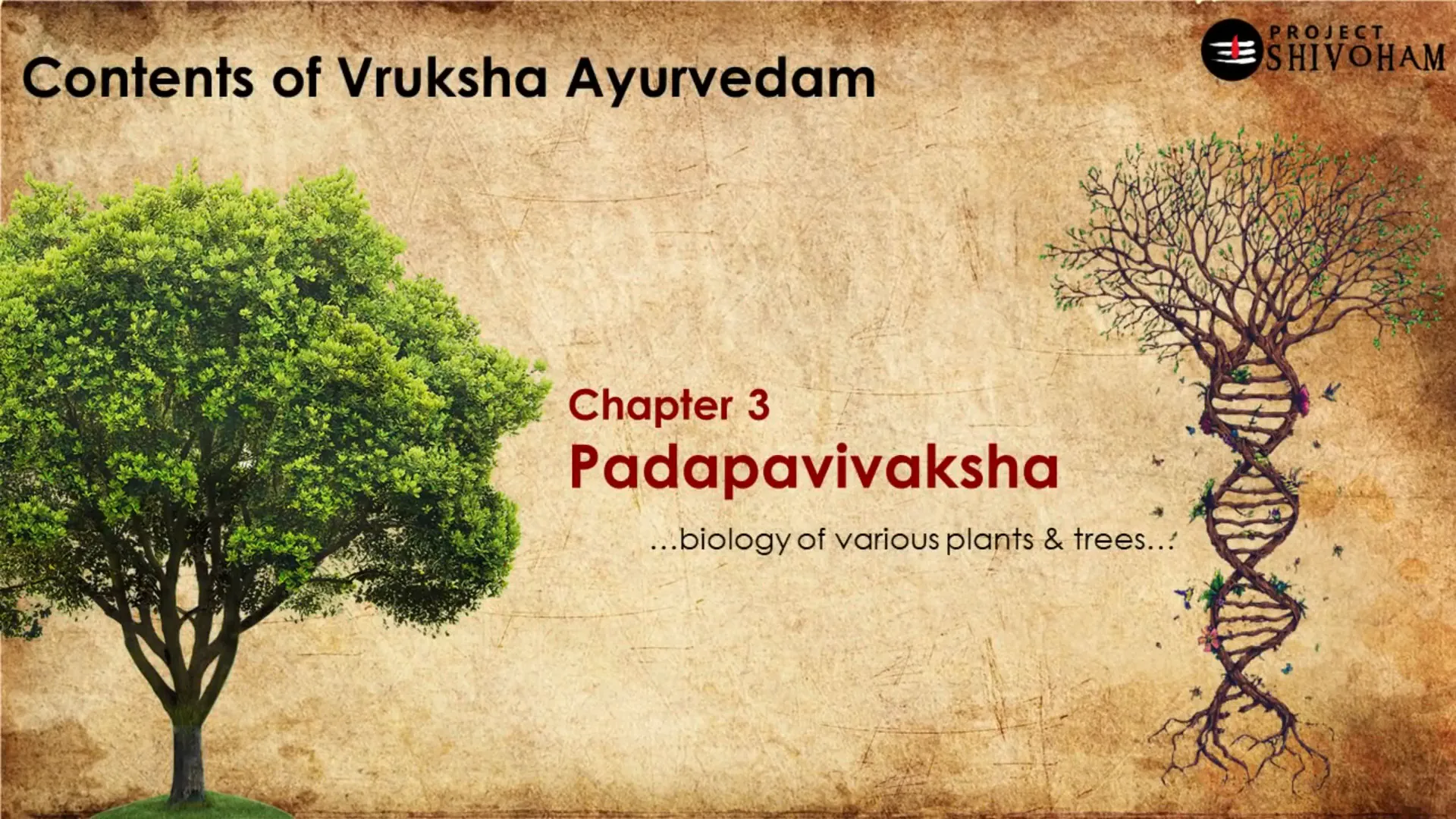
4. Rupana Vidana – Sensory Responses of Trees
An extension of the previous chapter, Rupana Vidana explores how trees respond to external stimuli. It reveals the subtle sensitivities of plants to their environment, which is essential knowledge for their care.

5. Nishchana Vidhi – Irrigation Techniques
This chapter outlines various irrigation methods suitable for different soil types and climates. It also specifies the quantity of water required at various stages of crop growth, highlighting the critical role of proper watering.
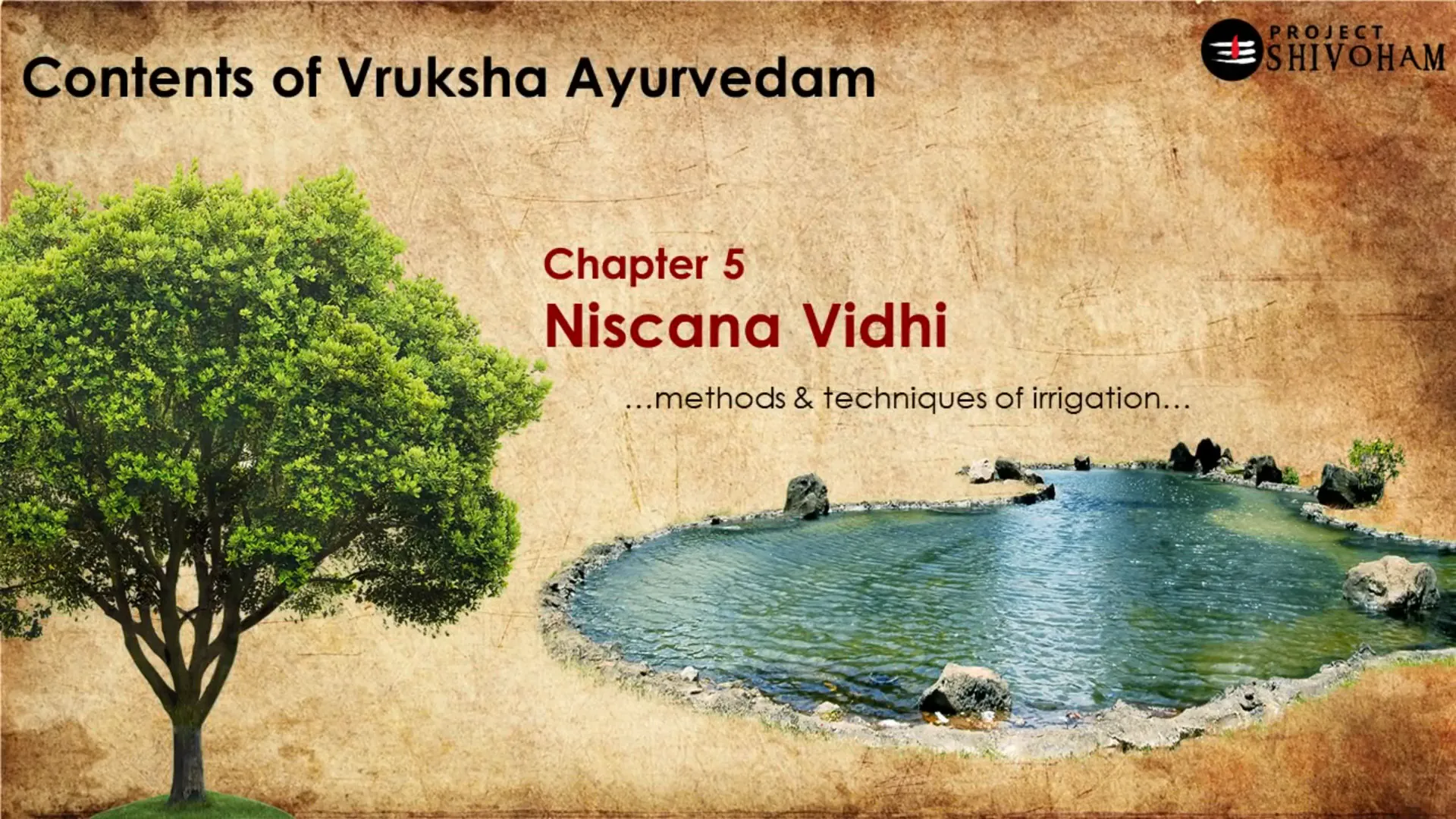
6. Poshana Vidhi – Fertilization and Early Nurturing
Poshana Vidhi focuses on preparing and applying fertilizers to nurture plants in their early stages. It discusses different types of fertilizers and feeding techniques to promote healthy growth.
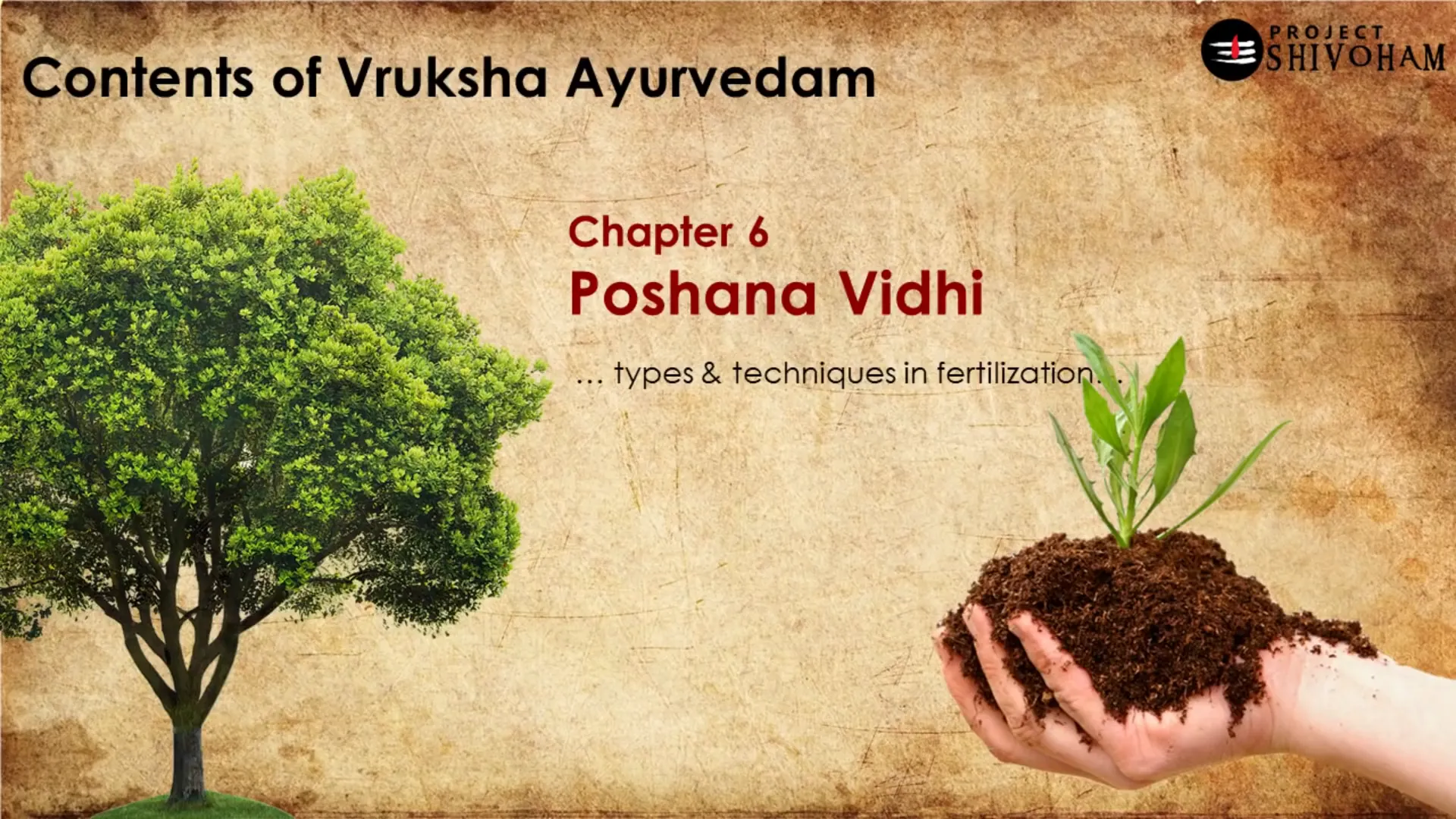
7. Dhruva Maraksha – Protecting Plants from Damage
This chapter teaches how to save plants and trees from extreme weather and repair damage such as broken branches. It likens treating a broken branch to treating a broken bone, showing the compassion and care ancient people had for trees.
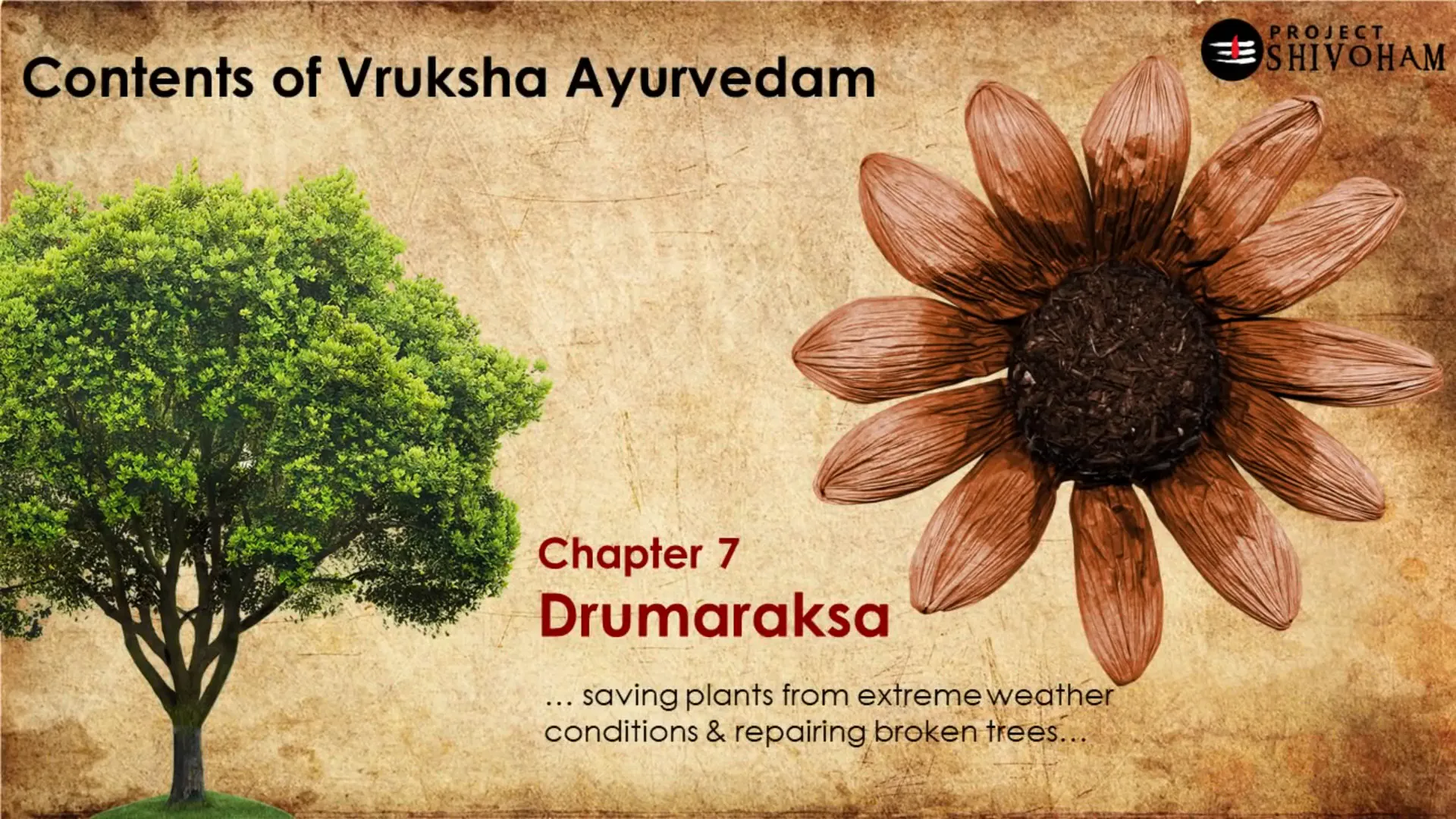
8. Taruchi Kitsu – Pest Control
Taruchi Kitsu addresses the common challenge of pest infestation. It provides remedies for various pests affecting different crops and trees, an issue as relevant today as it was in ancient times.
9. Upavana Kriya – Garden Organization and Cultivation
This chapter offers guidance on designing and cultivating gardens, including the strategic placement of plants and climbers for optimal growth and aesthetics.
10. Nibasana Taru – Benefits and Dangers of Plants
Nibasana Taru discusses which plants are beneficial or potentially harmful to humans and advises on which plants to keep at home or avoid. This knowledge protects human health while fostering a harmonious relationship with nature.
11. Chitrikarana – Plant Manipulation and Hybridization
One of the most fascinating chapters, Chitrikarana, explores techniques to alter plants organically. It explains how to infuse fragrance into non-fragrant flowers, change the color of leaves, or modify a tree’s shape. This ancient form of hybridization predates modern genetic modification but achieves similar outcomes through natural methods.
12. Taru Mahima – The Significance of Trees for Humanity
The final chapter reflects on the profound connection between human existence and the prosperity of plants and trees. It urges the protection of vegetation, emphasizing its critical role in sustaining life and well-being.
Timeless Wisdom from Masya Purana: The Value of Trees
A beautiful sloka from the Masya Purana resonates deeply with the philosophy of Vruksha Ayurvedam:
“Having one pond is equal to having ten wells,
Having one lake is equal to having ten ponds,
Having one child is equal to having ten lakes,
Having one tree is equal to ten children.”
This verse eloquently conveys the incomparable value of trees, elevating them even above children in terms of their contribution to life and society. It reflects the sensitivity and compassion ancient ancestors held towards nature and underscores the imperative to both pray to and protect the environment.
The Relevance of Vruksha Ayurvedam Today
In an era marked by environmental crises, deforestation, and climate change, the ancient science of Vruksha Ayurvedam offers invaluable insights. Its holistic approach to plant health, soil management, pest control, and ecological balance can guide modern sustainable agriculture and environmental conservation efforts.
Reviving this knowledge can help us reconnect with nature, foster respect for vegetation, and implement organic, time-tested methods for nurturing plants and trees—ultimately contributing to the prosperity and happiness envisioned by Sri Krishna in the Bhagavad Gita.
Frequently Asked Questions (FAQs) about Vruksha Ayurvedam
What is Vruksha Ayurvedam?
Vruksha Ayurvedam is an ancient Indian branch of knowledge focused on the health, wellness, and care of plants, trees, and crops. It complements Ayurveda, which is concerned with human health.
How is Vruksha Ayurvedam different from Ayurveda?
While Ayurveda addresses human ailments and treatments, Vruksha Ayurvedam specifically deals with the medicine and nurturing of vegetation, including soil, seeds, irrigation, fertilization, pest control, and plant healing.
Why is Vruksha Ayurvedam important?
It provides comprehensive knowledge for sustainable agriculture, environmental protection, and maintaining the ecological balance necessary for human prosperity and happiness.
Are there specific texts that describe Vruksha Ayurvedam?
Yes, major ancient texts include the Agni Puranam, Ardha Shastra by Janikya, Brihat Samhita by Varahamihira, and Briksha Ayurvedam by Surapala.
Can the principles of Vruksha Ayurvedam be applied today?
Absolutely. Its organic methods and holistic understanding of plant care can enhance modern sustainable farming, gardening, and environmental conservation practices.
What does the Masya Purana sloka say about trees?
It states that having one tree is equivalent to having ten children, highlighting the immense value and importance of trees in human life.
Conclusion: Embracing an Ancient Legacy for a Sustainable Future
Vruksha Ayurvedam is more than an ancient science; it is a timeless philosophy that honors the sacred relationship between humans and the natural world. Its comprehensive teachings remind us that the prosperity of humanity is inextricably linked to the health of plants, trees, and the ecosystem.
By rediscovering and embracing this ancient knowledge, we can nurture the environment with compassion and wisdom, ensuring that the vital cycle described in the Bhagavad Gita continues to sustain life smoothly and harmoniously.
Let us honor this legacy by protecting, preserving, and celebrating the greenery around us—because as the ancients knew, one tree is truly worth ten children.
This article was created from the video The Ancient Knowledge of VRUKSHA AYURVEDAM || Project SHIVOHAM || FACTS 009 with the help of AI. Thanks to Aravind Markandeya, Project Shivoham.